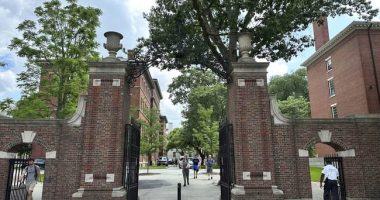The Metropolitan Police Service, which has more than 34,000 officers and is Britain’s biggest police force, must “change itself” or risk being broken up, the report published on Tuesday said.
“It is not our job as the public to keep ourselves safe from the police. It is the police’s job to keep us safe as the public,” said Louise Casey, an expert on victims’ rights and social welfare who led the review.

“Far too many Londoners have now lost faith in policing to do that.”
The findings ratchet up the pressure for a major overhaul of the Metropolitan Police after a series of scandals involving its treatment of women and minorities.
In a preliminary report released in October, Casey found that the department had failed to properly vet and train officers, and had allowed officers to remain on the job even after they were accused of domestic abuse or racial harassment.
Part of the problem is that there is a culture of denial in the department, with leaders adopting a “we know best” attitude that leads them to dismiss outside critics, the review found.
Funding cuts, along with the decision to close local police stations and effectively end community policing, also contribute to the situation.
Underlying all of this is the way the force is managed, not its size, the inquiry found.
“The Met is run as a set of disconnected and competing moving parts, lacking clear systems, goals or strategies,” the report said.

“It runs on a series of uncoordinated and short-lived initiatives, long on activity but short on action.”
But the Everard case was only one in a series of recent scandals at the Metropolitan Police, known as the Met.

Detectives didn’t initially link the victims, all gay men in their 20s whose bodies were found near Port’s home in east London. They only began investigating the deaths as potential homicides after the family of the final victim pressed for action.
Casey’s review found that the department hasn’t treated violence against women and girls as seriously as other forms of violence.
Read Related Also: ‘1000-Lb. Sisters’: Amy Slaton Thinks Tammy Slaton’s Weight Loss Will ‘Exceed’ Hers

The 363-page report also painted an alarming picture of how crimes against women and children are investigated due to a shortage of funding and a lack of specialised officers trained to handle these cases.
Officers investigating these crimes are forced to store rape samples in “over-stuffed, dilapidated or broken fridges and freezers,” because they don’t have access to fast-track forensic services, investigators found.
A lunchbox in one of these refrigerators contaminated the evidence. Another appliance broke down last summer, meaning the evidence was damaged and couldn’t be used in court.
“The de-prioritisation and de-specialisation of public protection has put women and children at greater risk than necessary,” the report said.
“Despite some outstanding experienced senior officers, an overworked inexperienced workforce polices child protection, rape and serious sexual offences.”
But the problems extend beyond the treatment of women and girls.

Twenty-four years after another inquiry found that institutional racism was a key factor in why the Met failed to investigate the killing of Black teenager Stephen Lawrence, Casey highlighted the fact that the department is still disproportionately white and male.
About 17 per cent of London police officers are Black, Asian or mixed race, compared with about 10 per cent a decade ago, according to the latest department statistics. Women account for almost 31 per cent of police officers, up from almost 25% in 2013.
Some 40 per cent of London’s population is Black, Asian or mixed race, according to the 2021 census.

King Charles’ Mother’s Day tribute after Queen’s death
The report found widespread bullying in the department, with one in five staff members that have protected characteristics — such as race, sexuality or disability — being victims.
“Female officers and staff routinely face sexism and misogyny,” the report said.






